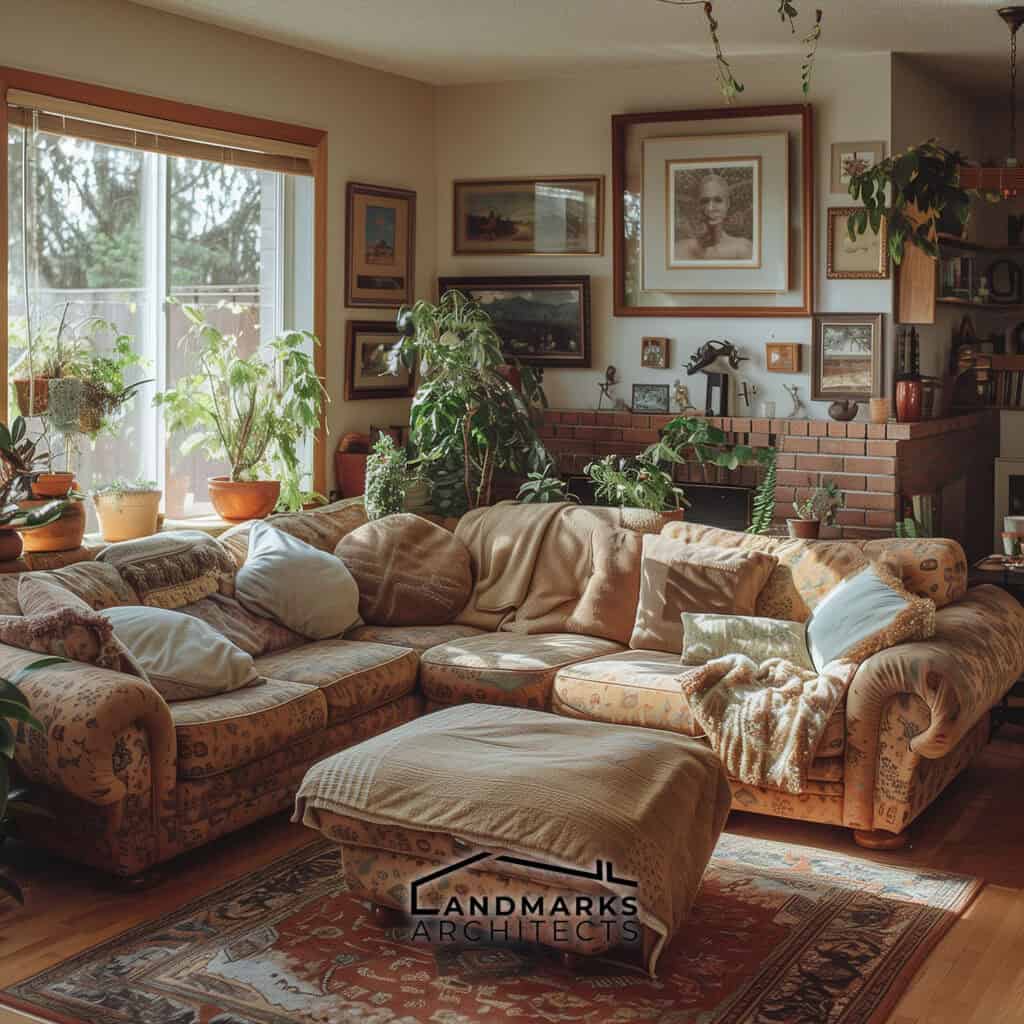
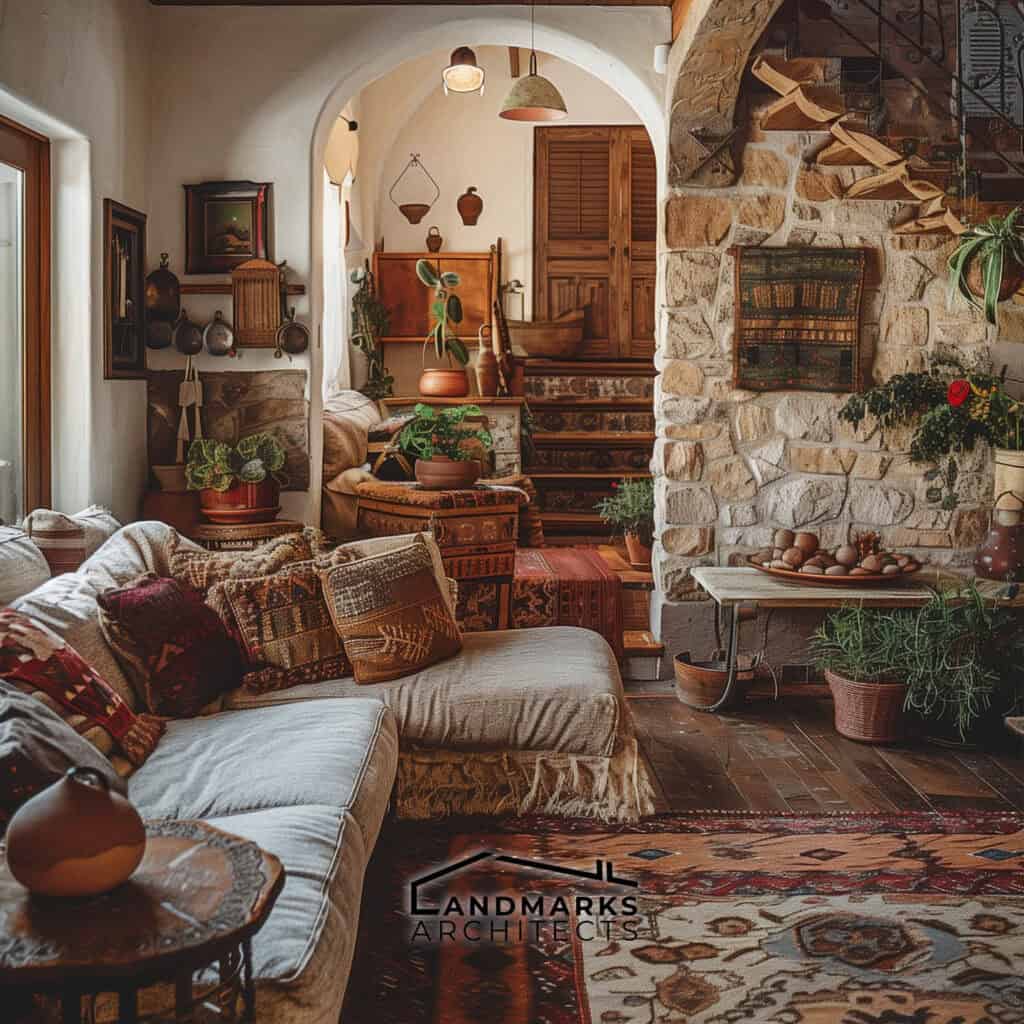
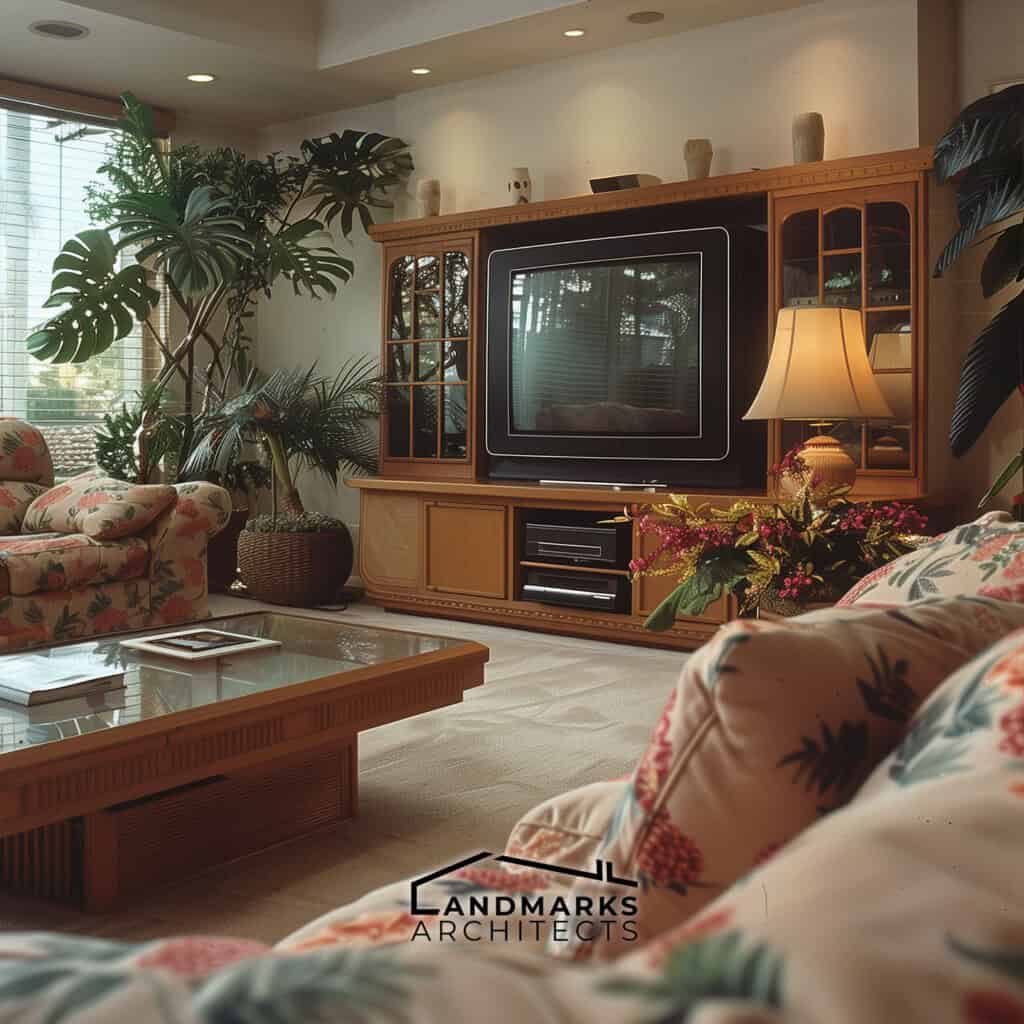
Do you want a home that truly reflects your unique style but feels overwhelmed by design choices? As a homeowner or design enthusiast, you deserve a space that captures the essence of a transformative era. You’re not alone in this journey.
At Landmarks Architects, we understand how challenging it can be to find inspiration. With years of experience in creating memorable interiors, we’re here to guide you through iconic 1990s design trends that still influence today’s aesthetics.
In this article, we’ll explore:
- Bold color palettes
- Minimalism and Zen aesthetics
- Floral prints
- Open-plan living
- Inflatable furniture
- Southwestern and Tuscan styles
- Innovative lighting solutions
- Textured walls
- Entertainment centers
- Wicker and rattan furniture
Ready to transform your space? Continue reading to discover how these trends can inspire your design journey and help you create a home that feels uniquely yours.
- 1. Bold Color Palettes
- 2. Minimalism and Zen Aesthetics
- 3. Influx of Floral Prints
- 4. The Emergence of Open-Plan Living
- 5. Inflatable Furniture and Futuristic Designs
- 6. Southwestern and Tuscan Styles
- 7. Track Lighting and Recessed Lighting
- 8. Textured Walls
- 9. Entertainment Centers and Massive TVs
- 10. Wicker and Rattan Furniture
- FAQ
1. Bold Color Palettes
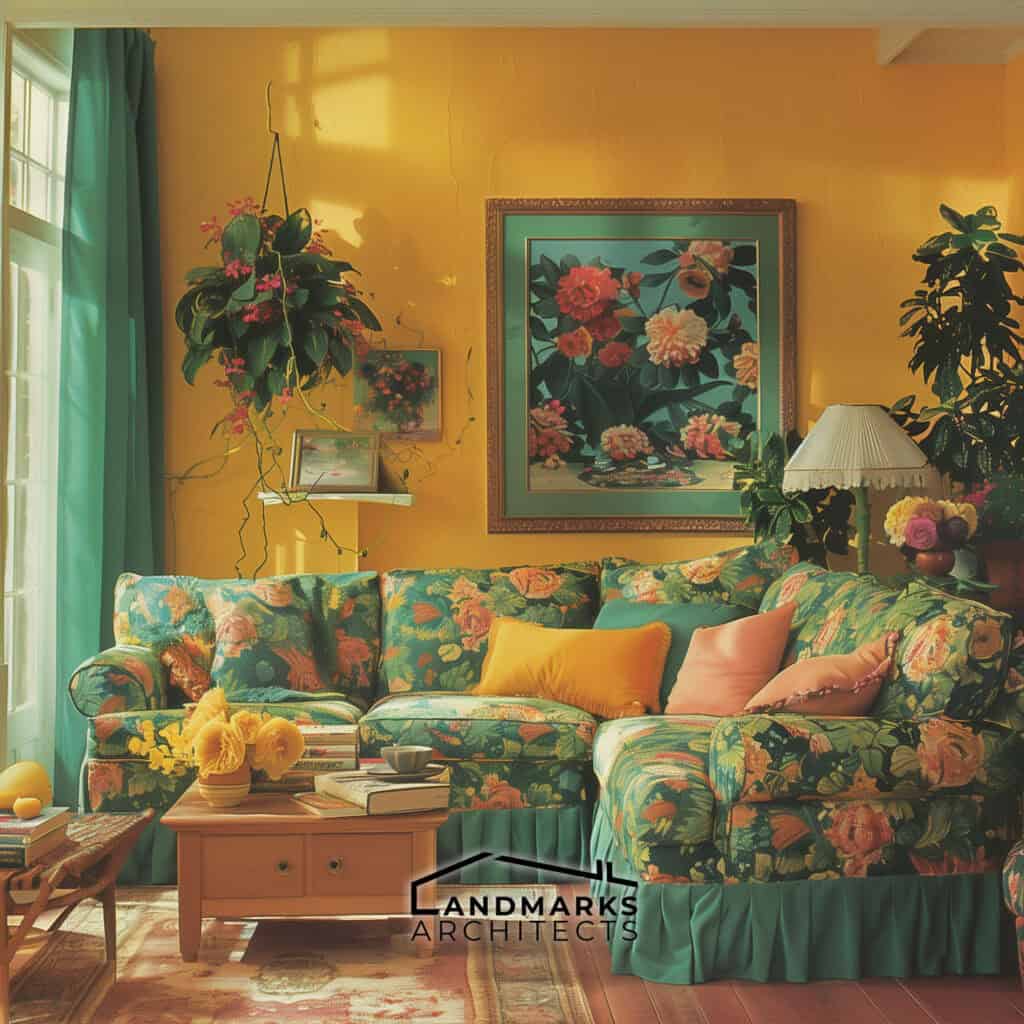
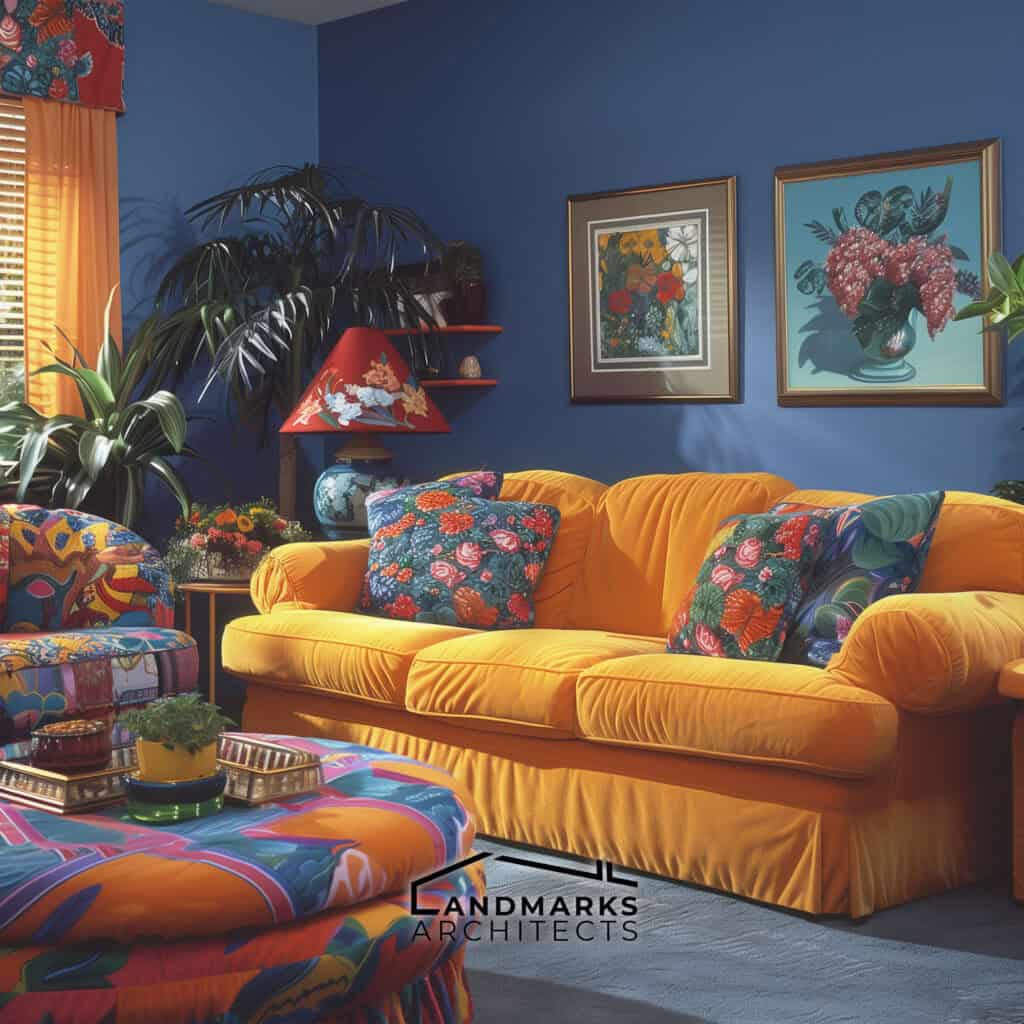
In the 90s interior design, bold colors shaped many rooms. Bright hues like yellow, blue, and green were popular for walls and accents. Primary colors stood out and filled large areas.
Painted walls in these colors made spaces feel lively. Designers liked fun combinations that brought joy.
Homeowners chose colorful decorations and furniture to match the walls. This trend added life and charm to many styles, making spaces feel cozy and inviting.
See Also 1980s Interior Design: Exploring 8 Iconic Trends of the Decade
2. Minimalism and Zen Aesthetics
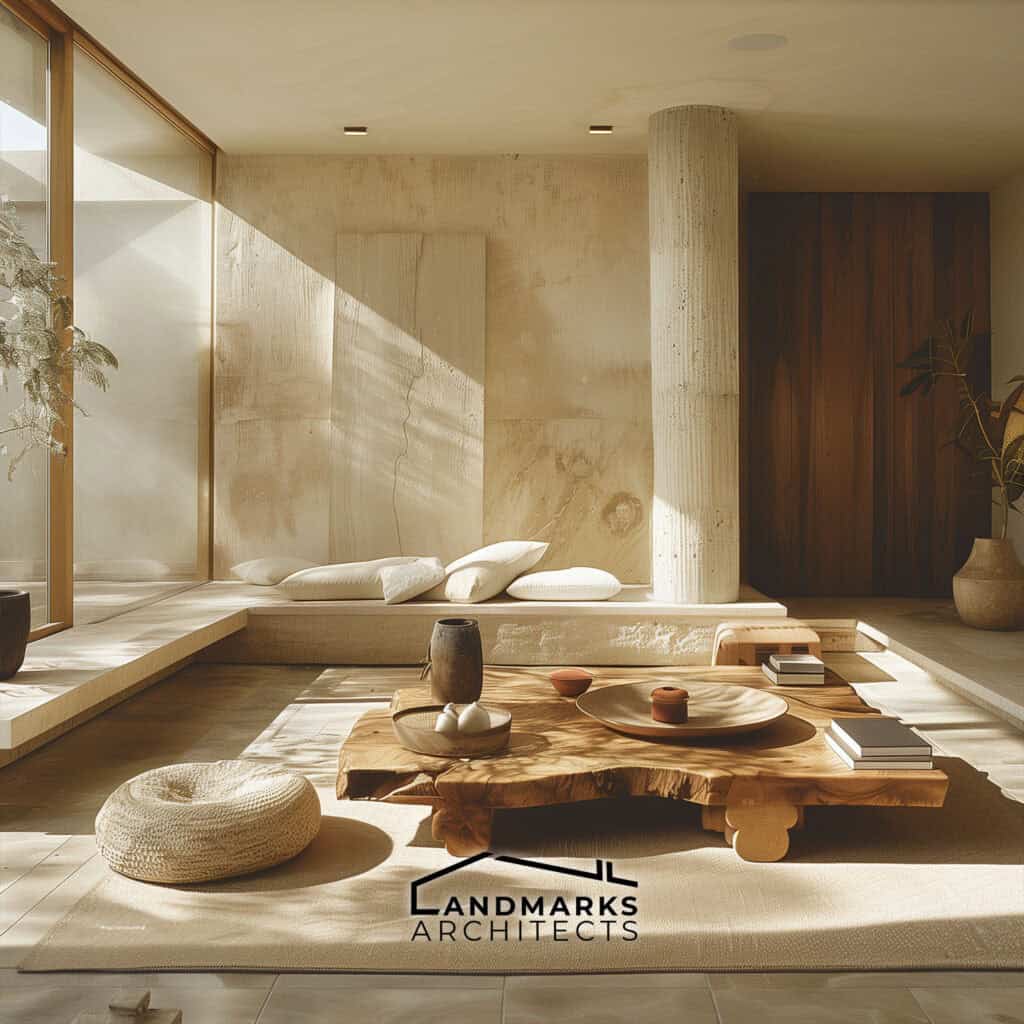

In the 1990s, Minimalism and Zen styles grew in interior design. This trend used clean lines and simplicity to make spaces feel open and airy. Designers liked a beige color palette for a calm feeling. They chose fewer but more meaningful objects to create a sense of space.
Vintage elements mixed with contemporary designs were popular. This mix allowed for self-expression while staying minimal. Rooms featured natural materials like wood and stone to connect with nature. Minimalistic spaces promoted peace and mindfulness, reflecting Zen principles.
The idea was to create rooms that felt calm and clear, making them timeless and inviting.
3. Influx of Floral Prints
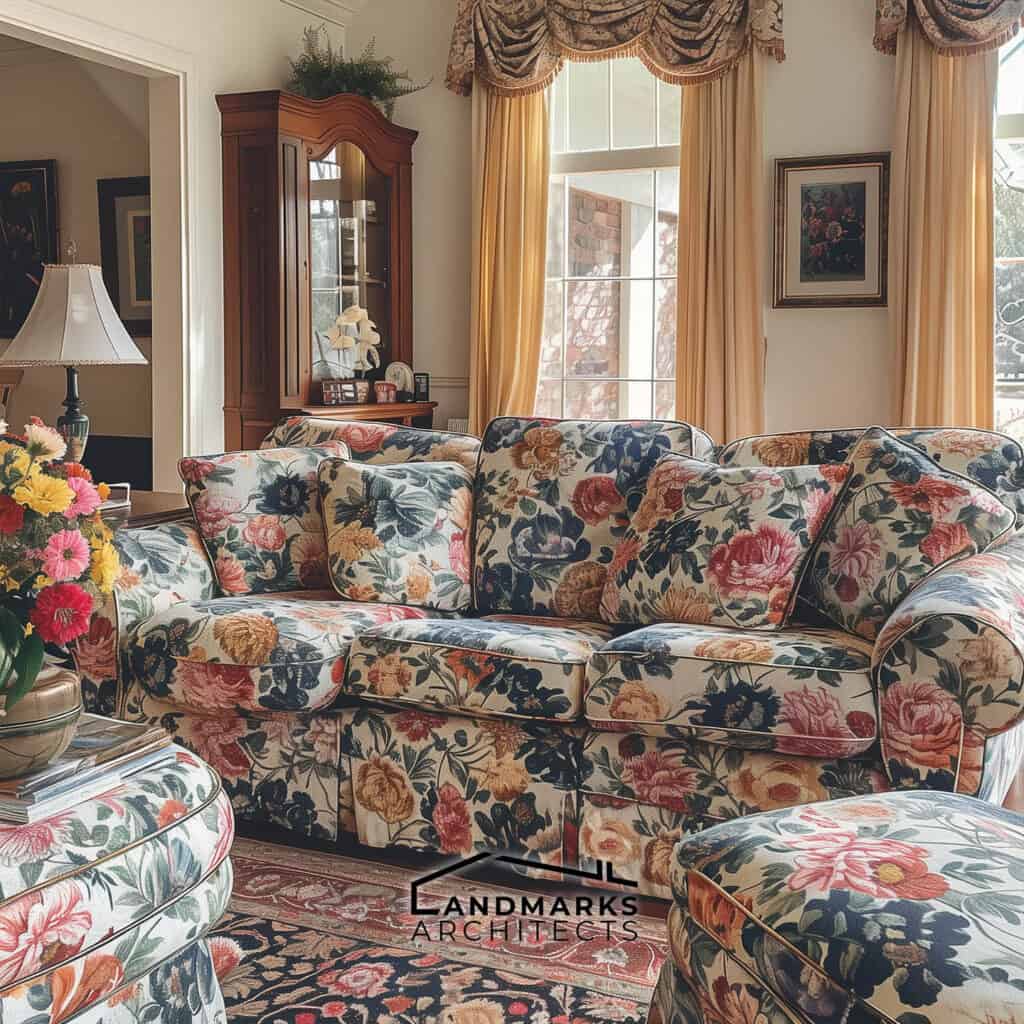
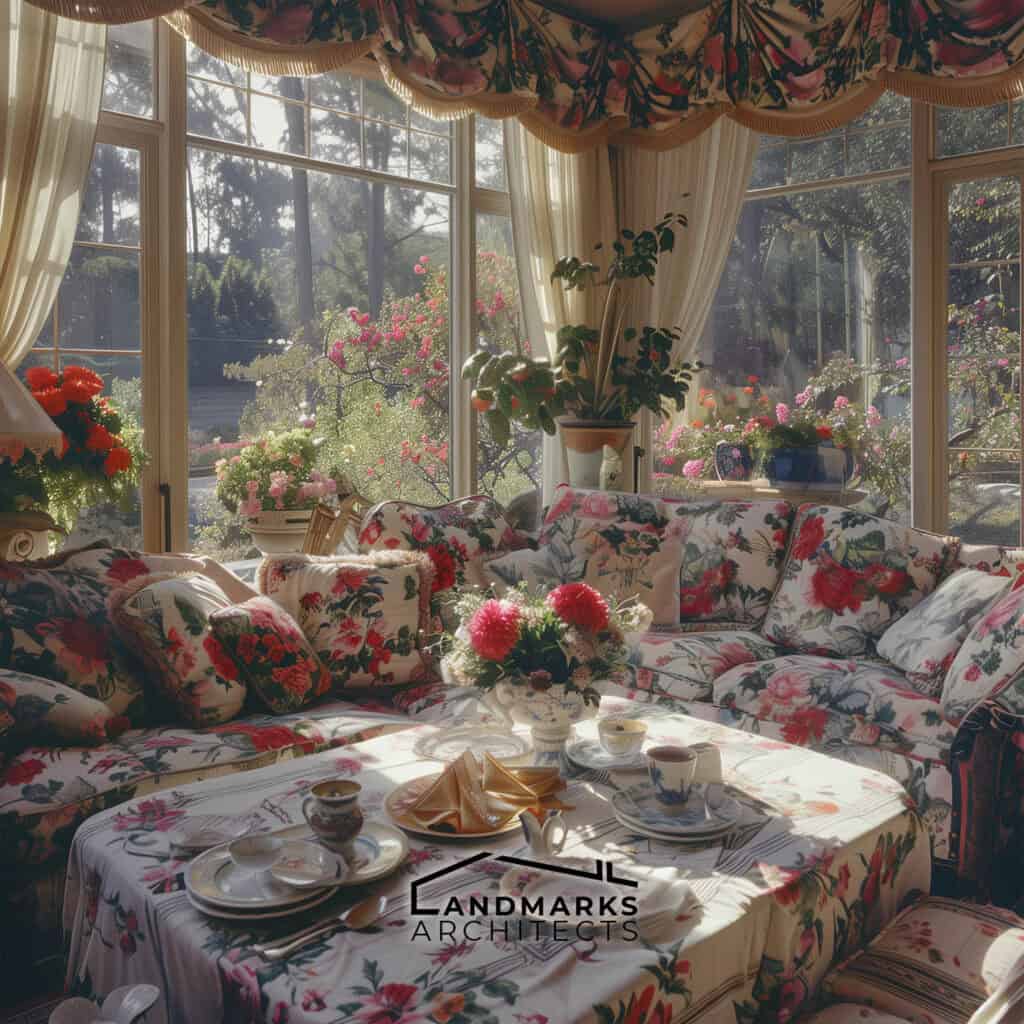
In the 1990s, floral prints became popular in interior design. These patterns added charm and warmth to many rooms. Floral designs were used in upholstery and drapery, creating cozy living spaces. The prints varied from small to large, allowing for unique decor.
Floral prints mixed well with other patterns, making the decor vibrant. This trend showed a love for personalized spaces. This time, it combined nostalgia with modern styles. Using floral patterns made rooms feel inviting in the 90s.
4. The Emergence of Open-Plan Living
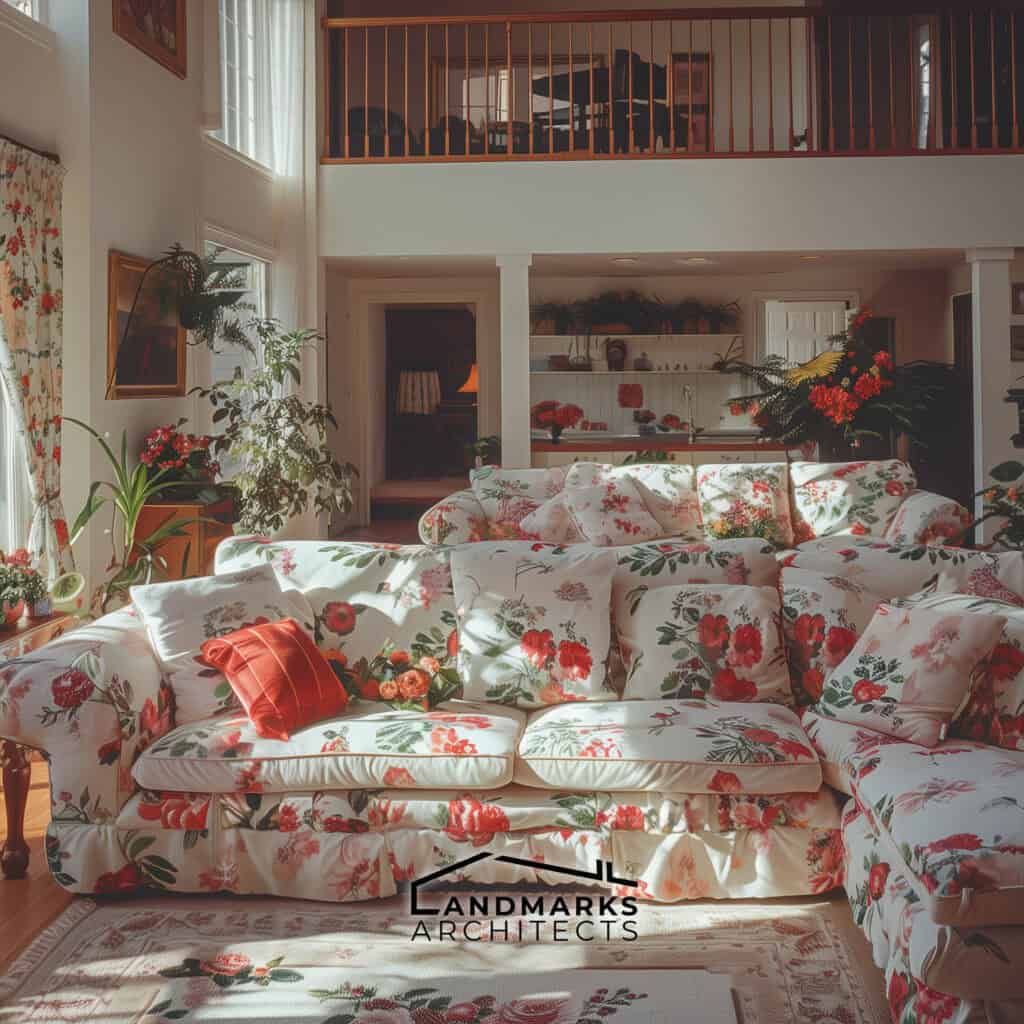
In the 1990s, open-plan living became a major trend in interior design. This style combined several rooms into one large area, changing how people used their homes. Homeowners wanted larger living spaces that felt connected. An open layout improved the kitchen, dining room, and living room flow.

Benefits of Open-Plan Design:
- Social Interaction: Families could easily talk while cooking or entertaining.
- Light and Air: Fewer walls brought in more natural light and air.
- Versatility: The space could be used for many activities.
This design made rooms feel open and welcoming, moving away from traditional, separate spaces to modern house design focused on community.
See Also Art Nouveau Interior Design: Top 10 Inspiring Decor Ideas
5. Inflatable Furniture and Futuristic Designs
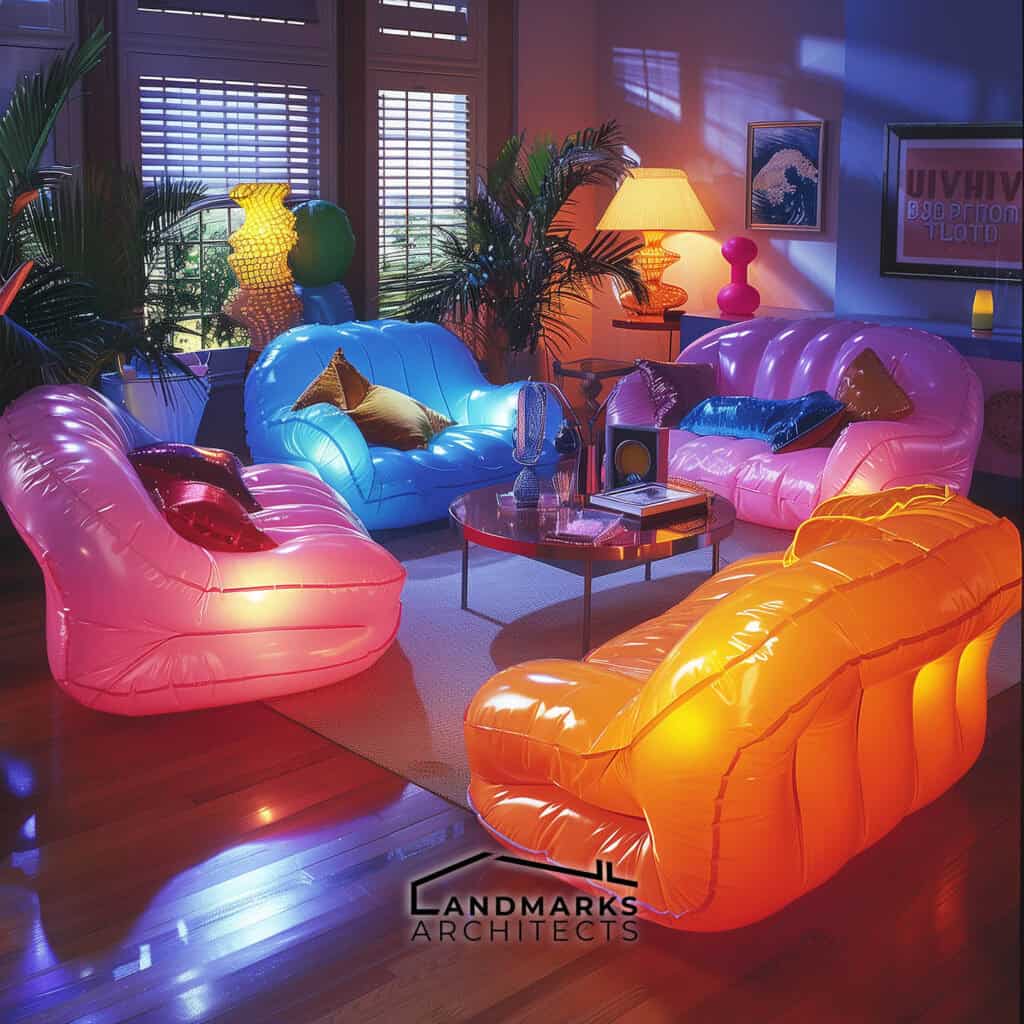
Inflatable furniture showed the fun side of 90s interior design. Bright colors and unique shapes made rooms playful, especially for kids. Popular items included inflatable chairs and inflatable sofas. These pieces were light and easy to move, great for different spaces. They often had bright, neon designs.
This trend mixed comfort with a fun look, making inflatable furniture a sign of youthful style in home decor. Today, this nostalgic style is coming back in contemporary design. It blends retro charm with modern use, adding flair to any room.
6. Southwestern and Tuscan Styles

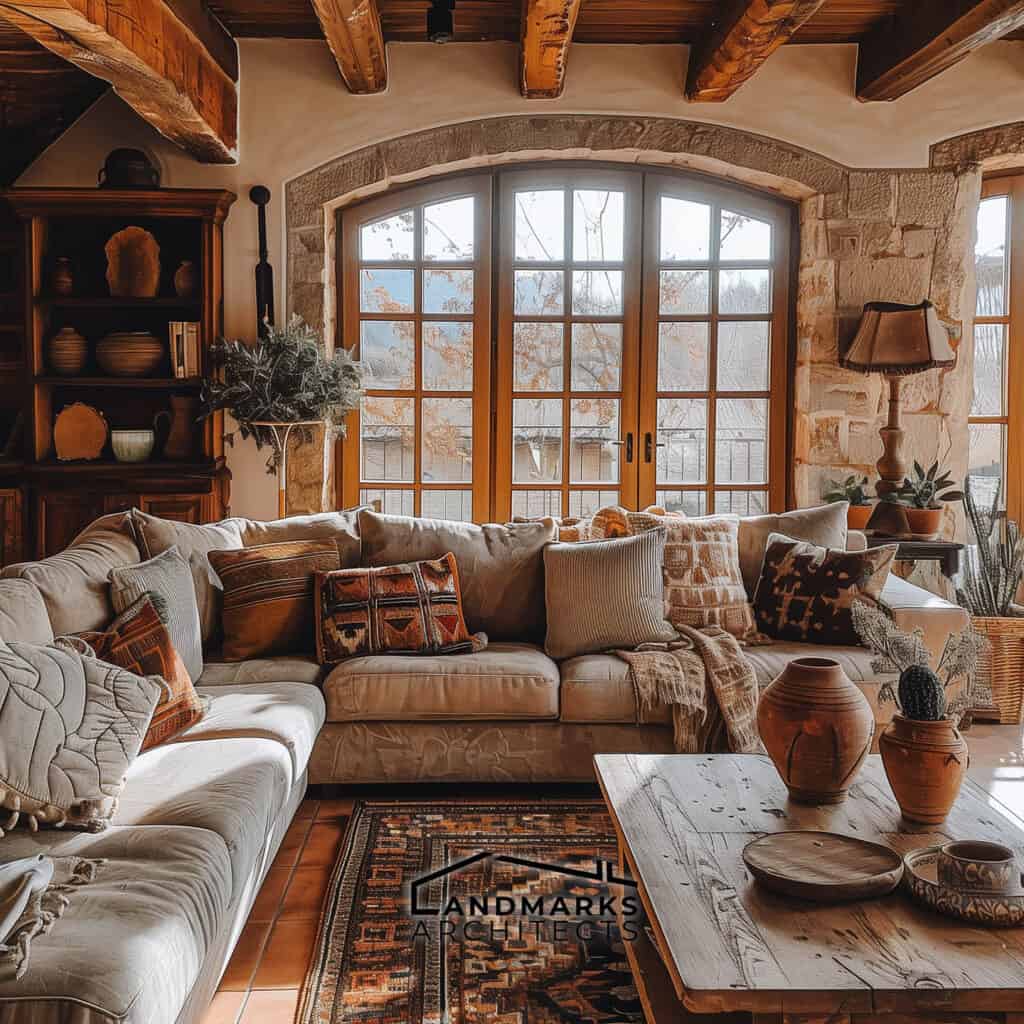
Southwestern and Tuscan interior design styles were popular in the 1990s, blending vintage and contemporary elements. They are known for their earthy colors and warm tones. These styles use natural materials like stone and wood. Handcrafted items, such as pottery and textiles, add charm to a room.
Tuscan style features rustic elegance with rich textures. Southwestern decor shows vibrant culture with bold colors and patterns. Both styles create an inviting atmosphere using natural elements. They offer a comfortable and stylish look, making them popular in the ’90s.
7. Track Lighting and Recessed Lighting
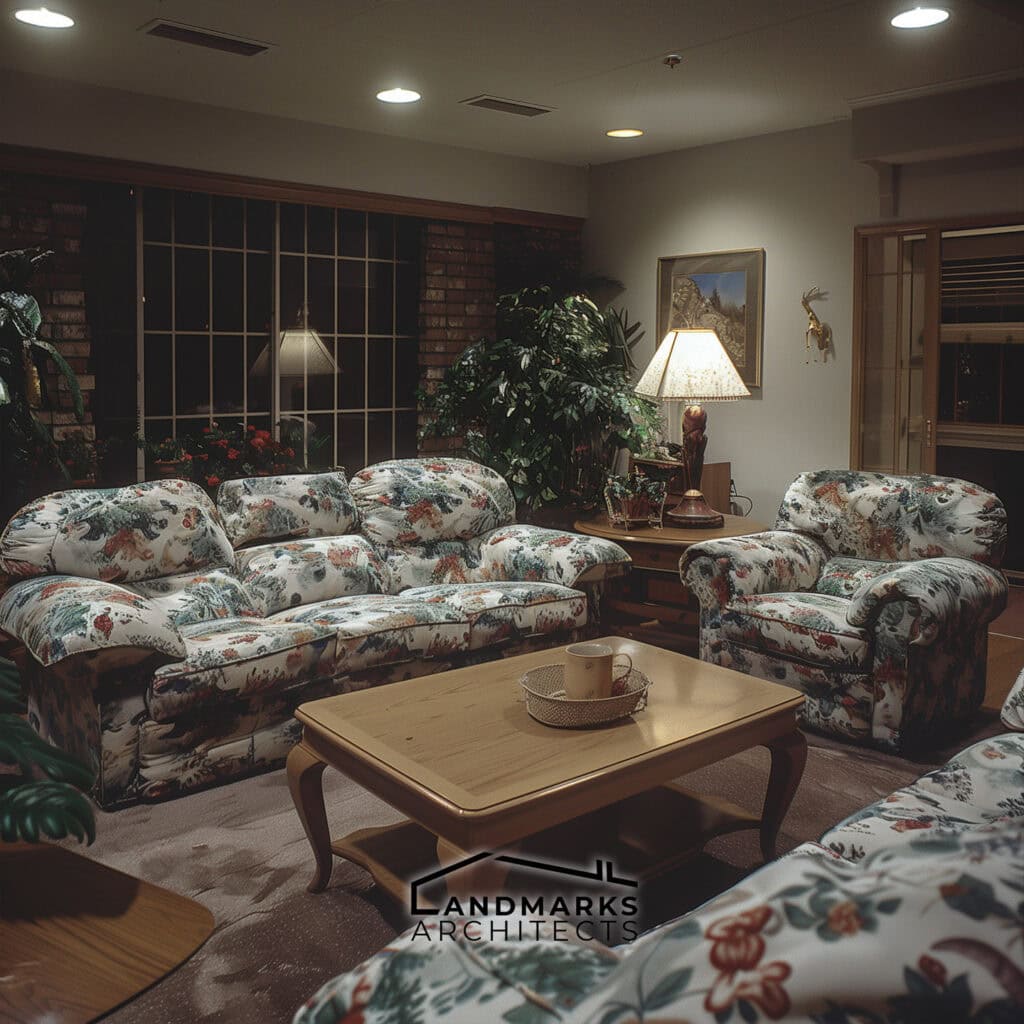
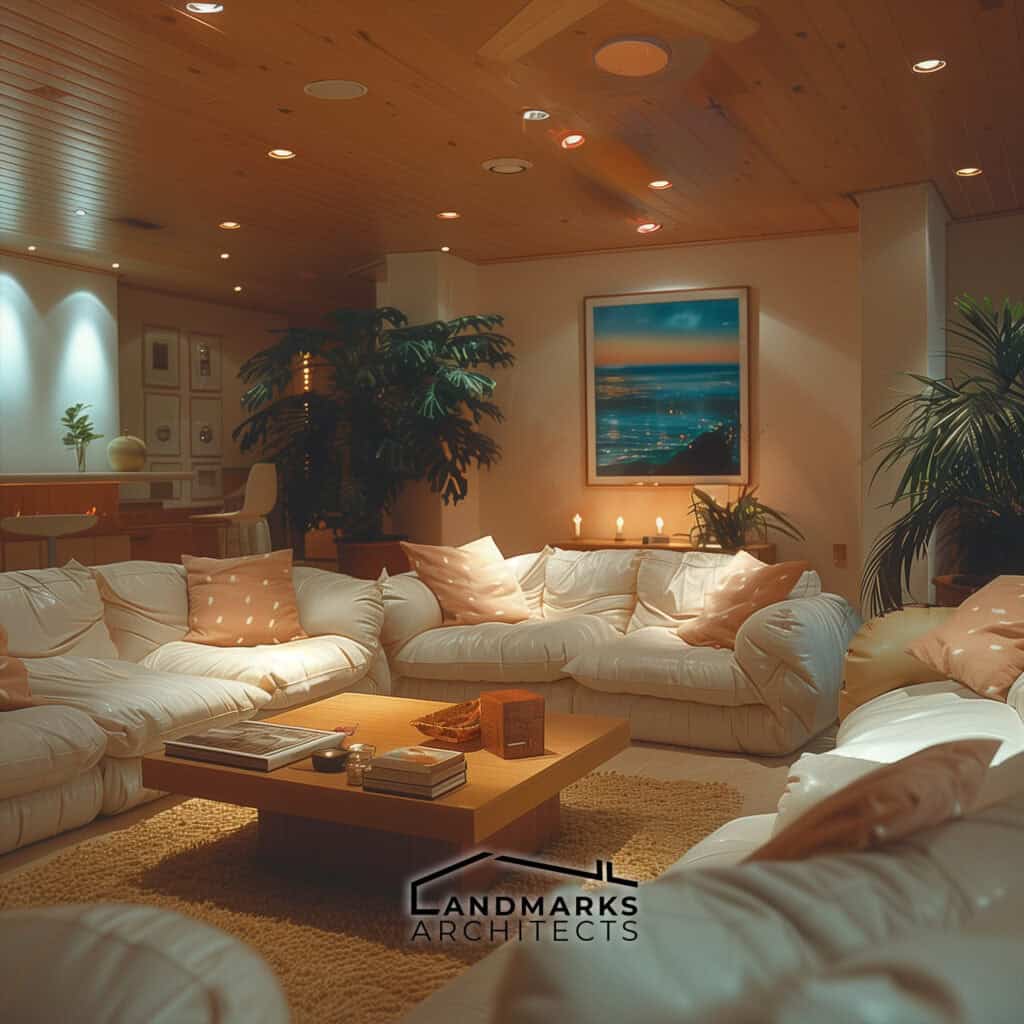
In the 1990s, track lighting and recessed lighting were popular in interior design. Each had unique benefits for different rooms. Track lighting is flexible with adjustable fixtures that highlight areas, improving style and function.
Recessed lighting provides a clean look. Fixtures are installed in the ceiling, giving soft light. This works well in modern spaces that want an airy feel. Track lighting suits industrial designs, while recessed lighting fits traditional and contemporary styles.
These lighting trends helped homeowners enhance their spaces. The choice often depended on personal taste and the feel wanted in each room.
8. Textured Walls
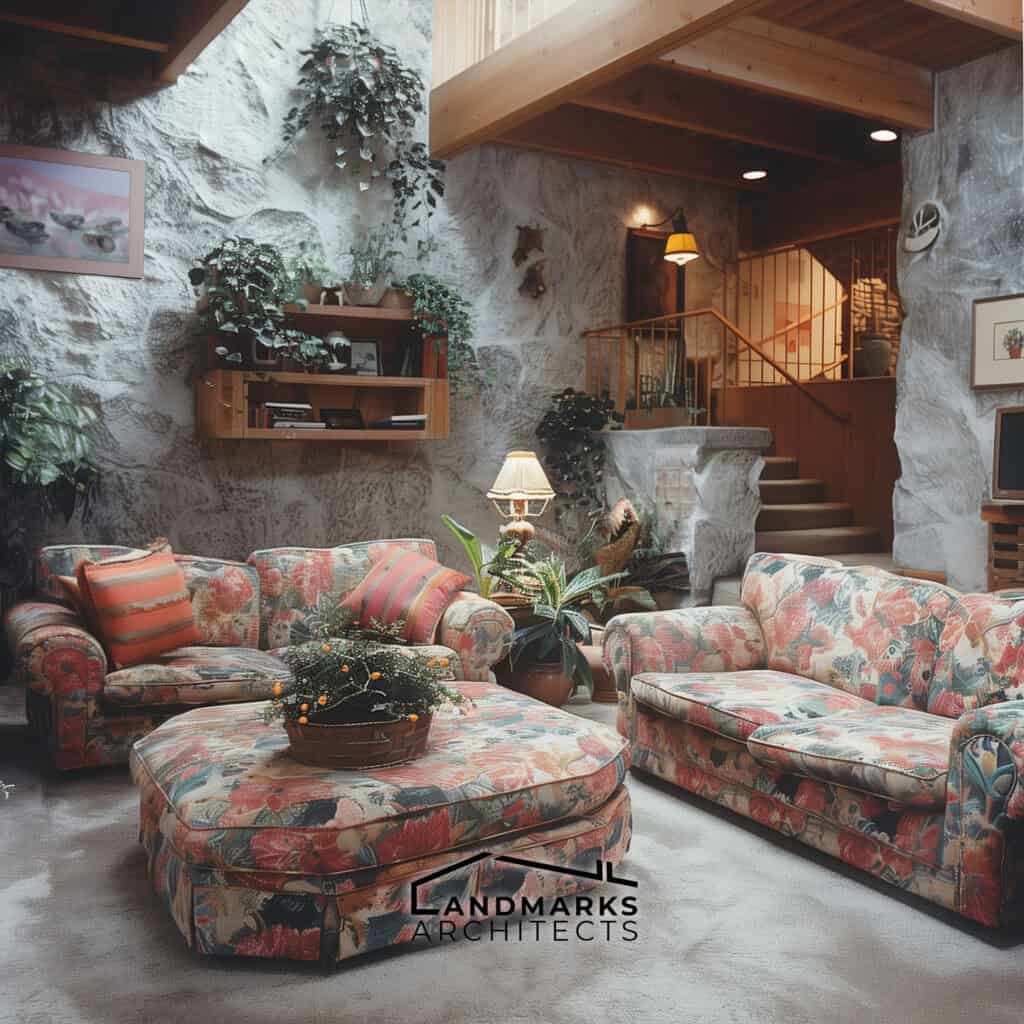
Textured walls became a popular trend in 1990s interior design. Techniques like faux finishes and sponge painting added dimension and interest to interiors.
- Faux Finishes: These mimic materials like wood, stone, or marble. Homeowners enjoyed experimenting with these techniques to elevate spaces.
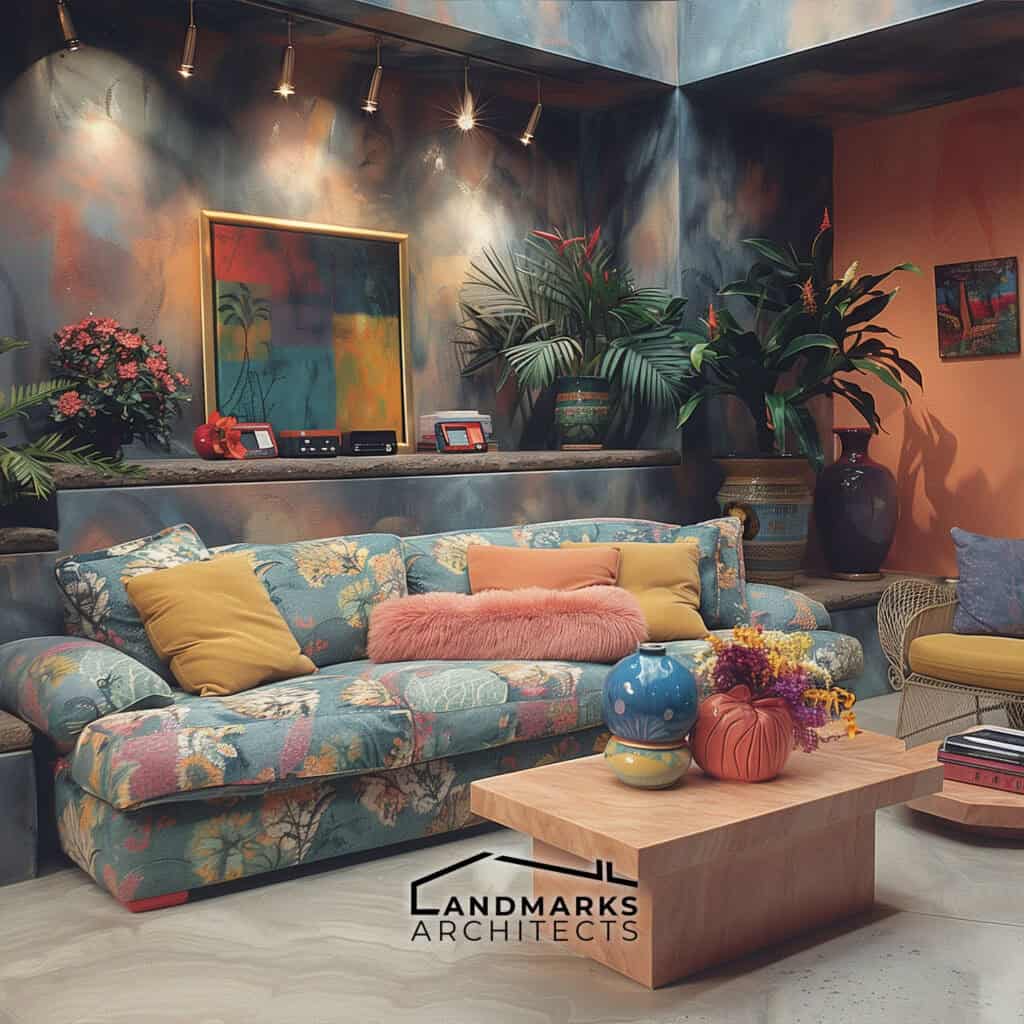
- Sponge Painting: This method involves applying paint with a sponge. It creates a soft, textured look that many found appealing for living areas and bedrooms.
Textured elements added a unique touch to the walls. They allowed for creativity and personalization in each room. Bright colors and patterns often accompany these techniques, enhancing the visual impact.
While these trends may seem dated today, they left a lasting impression on interior design. Many still remember the charm and character they brought to homes in the 90s.
9. Entertainment Centers and Massive TVs
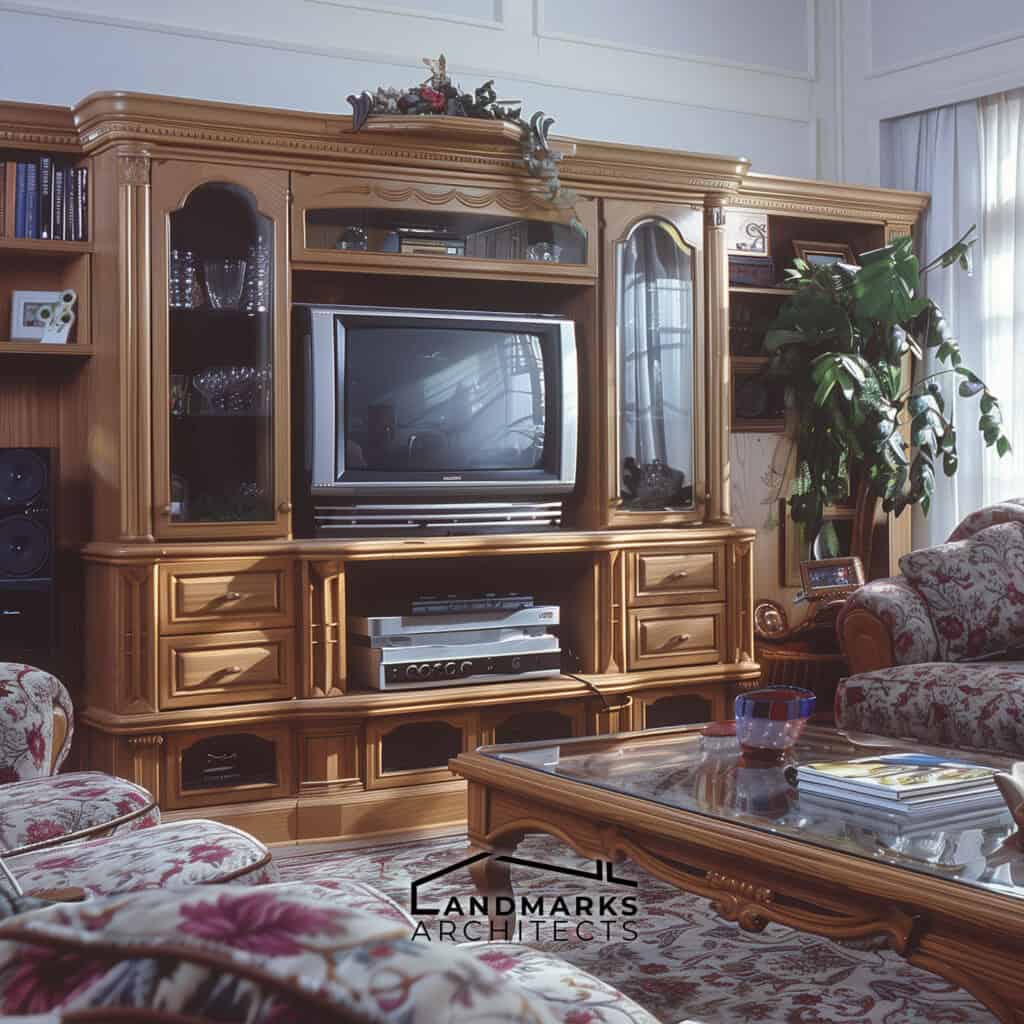
In the 1990s, entertainment centers became essential furniture in homes. They held large TVs, along with VCRs, DVD players, and game consoles. These centers were often wood-made and had intricate designs with glass doors. They added style while fitting the bulky technology of the time.
Television sizes grew a lot, with many families choosing big screens that dominated the room. These technological advancements changed how people interacted in their living spaces. The rise of personal computers and internet access also changed room layouts.
People created spaces that combined fun and function, reflecting 90s interior design trends.
10. Wicker and Rattan Furniture
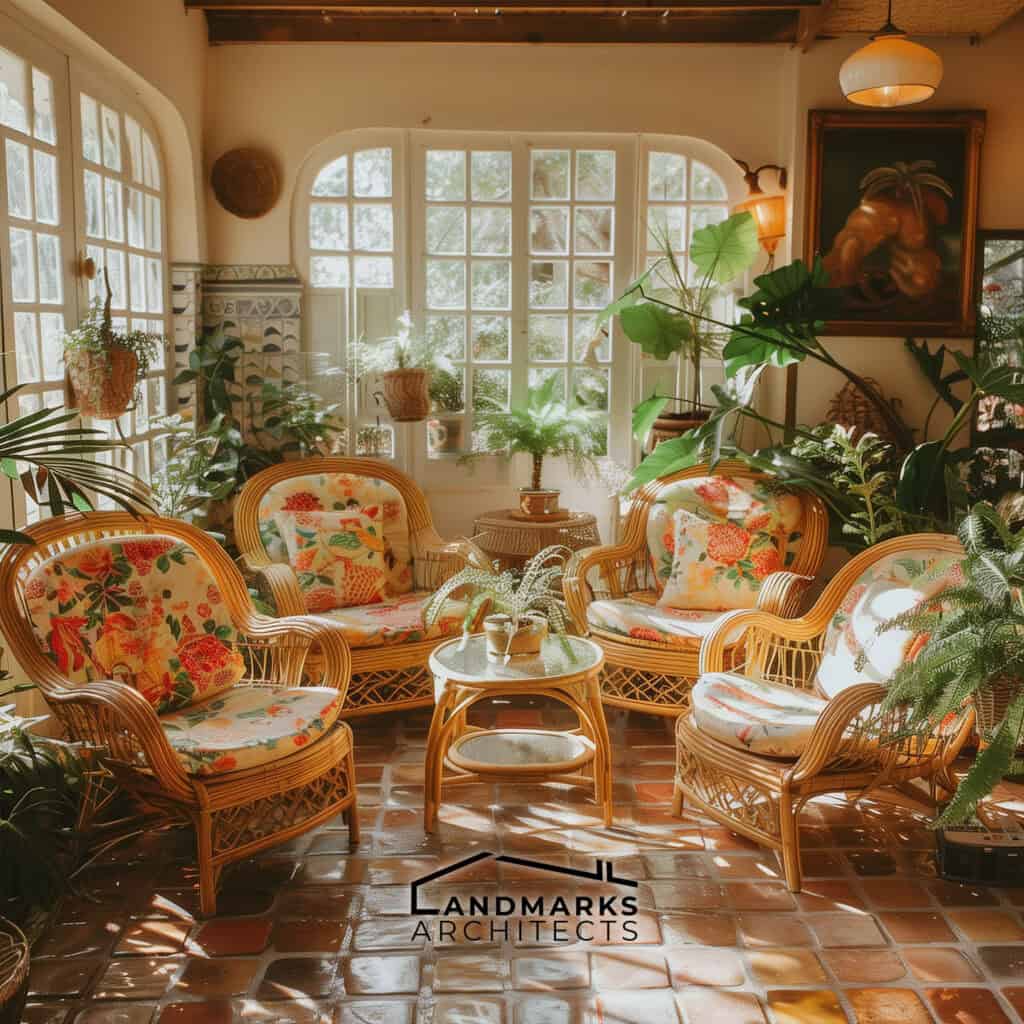
Wicker and rattan furniture became popular in the 1990s for their versatility and natural appeal. These materials are linked to a relaxed, bohemian style.
Key Features:
- Light wood colors: Wicker and rattan are often in light or blonde wood tones.
- Natural textures: Their textures add warmth and comfort to any room.

This furniture includes chairs, tables, and decorative pieces, giving a nostalgic nod to vintage styles. Using wicker and rattan can enhance casual living spaces.
They are great for sunrooms and patios, highlighting a connection with nature. The popularity of this furniture style has continued, making it a timeless choice in interior design.
See Also Gothic Interior Design: 8 Key Elements You Should Know
1990s Interior Design: A Recap
The 1990s brought many exciting trends that still inspire homes today. Bright color palettes made rooms lively, while open-plan living changed how families used their spaces. Floral prints and natural materials added warmth and charm, showing the different styles of the decade.
Fun designs, like inflatable furniture, brought a playful touch that matched the fashion of the time. Smart lighting solutions helped rooms feel bigger and brighter.
These trends have a lasting impact on the design world. By exploring these iconic styles, you can create a cozy home that shows your love for vintage designs.









